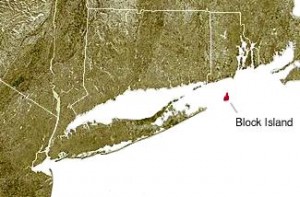 On April 6, 1776, the shooting war began immediately between the two countries, including naval battles between the British Royal Navy and the just established Continental Navy.
On April 6, 1776, the shooting war began immediately between the two countries, including naval battles between the British Royal Navy and the just established Continental Navy.
A British Victory
One of the first encounters at sea did not go well for the fledgling U.S. fleet. Known as the Battle of Block Island, this small skirmish took place off the waters of Rhode Island. The battle played out during the night under bright moonlight, and is considered a victory for the British.
It was a victory because the HMS Glasgow of the Royal Navy commanded by Captain Tryingham Howe managed to escape a numerically superior fleet of seven Continental ships headed by U.S. Commodore Esek Hopkins. The British also inflicted more casualties upon the Americans, mostly as a result of musket fire between the ships. In short, it was one British ship against seven American vessels and the Brits came out on top.
The Battle of Block Island, by all accounts, was an event marked by confusion and poor performance by marines and sailors on the American side. The American fleet had just returned from the Bahamas where they had managed a successful raid in a British supply base. The fleet also successfully captured some smaller British ships on the way back.
A ‘Helter Skelter’ Battle
However, bad weather and an outbreak of disease had considerably weakened the American forces. The HMS Glasgow outgunned several of the American ships, inflicting heavy damage by cannon fire on the U.S. vessel, The Cabot. Three American ships eventually ganged up on the Glasgow and managed to inflict damage via cannon fire. But the wily Captain Howe was able to escape this superior force and sail to safety in Newport.
One of the captains of the American fleet described the Battle of Block Island as “helter skelter.” It also resulted in much recrimination and criticism of the American officers in command. Several were court martialed. Some were accused of cowardice and incompetence, although Commodore Hopkins was cleared of all charges.